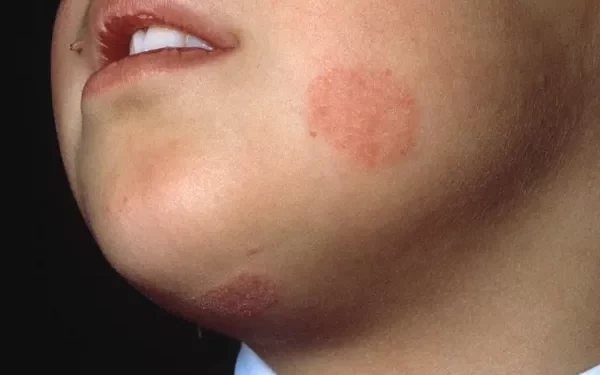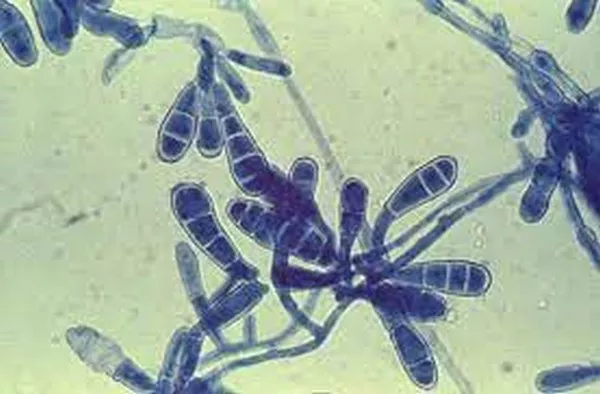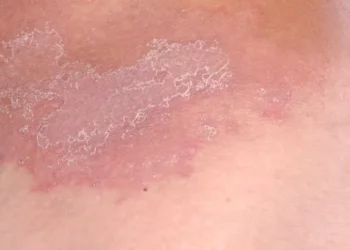Buni skin disease is a type of skin infection that causes various symptoms such as itching, redness, and scaly lesions. It is primarily a fungal infection but can sometimes be associated with other skin conditions. Buni is common in tropical areas, where the climate promotes the growth of fungi and bacteria. It can affect people of all ages, but it is more common in those with weakened immune systems or poor hygiene. In this article, we will look at what Buni skin disease is, its symptoms, causes, treatments, and preventive measures.
Understanding Buni Skin Disease
Buni skin disease, also known as Tinea corporis or ringworm, is caused by a fungus that infects the outer layers of the skin. Despite its name, ringworm is not caused by a worm but rather by dermatophyte fungi. These fungi thrive in warm and moist environments, which makes places like gyms, locker rooms, and communal swimming pools prime spots for infection.
The term “Buni” is often used in different regions to refer to fungal skin diseases in general. However, it is particularly used in tropical areas where the disease is more prevalent. The fungus responsible for the infection can be spread through direct skin-to-skin contact with an infected person or through contact with contaminated objects such as towels, clothing, or bed linens.
Symptoms of Buni Skin Disease
The symptoms of Buni skin disease can vary depending on the type of fungus causing the infection and the individual’s skin type. However, some common signs and symptoms include:
Itchy Red Patches: One of the most noticeable symptoms is the appearance of red, itchy patches on the skin. These patches may appear on any part of the body, but they are most commonly found on the arms, legs, and torso.
Ring-like Shape: The affected area may develop a ring-like appearance with raised edges. This is where the name “ringworm” comes from. The center of the patch often appears clearer or normal compared to the edges.
Scaling: The skin around the infection may become dry, flaky, or scaly. The scaling can worsen with time and may cause irritation.
Blisters or Pus: In some cases, blisters may form on the affected skin. These blisters may fill with pus and eventually burst, leading to crusting or oozing.
Inflammation and Swelling: The infected area may become inflamed, with the skin appearing swollen and painful to touch.
Causes of Buni Skin Disease
The primary cause of Buni skin disease is a fungal infection. Several types of fungi, known as dermatophytes, can cause the disease. These fungi live on the dead skin cells, hair, and nails, and they thrive in warm and humid environments.
There are several ways in which a person can get infected with Buni skin disease:
Direct Skin Contact: Coming into direct contact with the skin of an infected person is one of the most common ways to contract the disease. Sharing personal items such as towels, razors, or clothing can also transmit the infection.
Contact with Contaminated Objects: Fungi can survive on surfaces like floors, bed linens, and clothing for extended periods. If an individual comes into contact with these contaminated surfaces, they may develop the disease.
Animals: Certain animals, including dogs, cats, and livestock, can carry fungi that cause Buni skin disease. Petting an infected animal or handling their bedding may lead to infection.
Poor Hygiene: Maintaining poor hygiene, such as wearing sweaty or dirty clothes for extended periods or not bathing regularly, increases the risk of developing Buni skin disease.
Weakened Immune System: People with weakened immune systems, due to conditions like HIV/AIDS or diabetes, are more susceptible to fungal infections, including Buni skin disease.
Diagnosis of Buni Skin Disease
If you suspect you have Buni skin disease, it is important to seek medical attention for an accurate diagnosis. A healthcare provider will examine the affected area and may perform a skin scraping to check for the presence of fungi. In some cases, a laboratory test may be needed to identify the specific type of fungus causing the infection.
Doctors may also use a special ultraviolet light called a Wood’s lamp to examine the skin. This light can help reveal fungal infections that are not immediately visible to the naked eye.
Treatment for Buni Skin Disease
The good news is that Buni skin disease is treatable. Treatment usually involves antifungal medications that help to eliminate the fungus causing the infection. The following are common treatments used for Buni skin disease:
Topical Antifungal Creams or Ointments: For mild cases of Buni skin disease, topical antifungal creams, ointments, or powders are often effective. These medications are applied directly to the affected area and can help to reduce symptoms and kill the fungus.
Oral Antifungal Medications: In more severe cases or if the infection does not improve with topical treatments, doctors may prescribe oral antifungal medications. These medications are taken by mouth and work throughout the body to treat the infection.
Medicated Shampoos: If the infection affects the scalp, medicated shampoos containing antifungal agents may be recommended. These shampoos help to control the infection and prevent it from spreading to other areas.
Proper Skin Care: Keeping the skin clean and dry is essential during treatment. Avoiding tight clothing and excessive sweating can help prevent the fungus from thriving.
Avoid Scratching: Scratching the infected area can spread the fungus to other parts of the body. Keeping nails trimmed and avoiding scratching the skin is important to help control the infection.
Prevention of Buni Skin Disease
While it may not always be possible to completely prevent Buni skin disease, there are several steps you can take to reduce your risk of getting infected:
Maintain Good Hygiene: Regularly washing your body with soap and water is the first line of defense against fungal infections. Keeping your skin dry is also important, as fungi thrive in moist environments.
Avoid Sharing Personal Items: Do not share towels, clothing, razors, or other personal items with others. If you must share items like towels in a public place, make sure they are cleaned and disinfected between uses.
Wear Breathable Clothing: Wearing loose, breathable clothing can help keep your skin dry and prevent the growth of fungi. Avoid wearing damp clothes for long periods of time, especially after exercise or swimming.
Keep Your Home Clean: Regularly clean and disinfect surfaces that come into contact with your skin, such as bed linens, towels, and clothing. If you have pets, ensure they are regularly groomed and checked for fungal infections.
Be Cautious in Public Spaces: When visiting public areas such as gyms, swimming pools, or locker rooms, always wear sandals or flip-flops to avoid direct contact with contaminated floors.
When to Seek Medical Help
If you notice any of the symptoms of Buni skin disease, it is important to seek medical attention. Early treatment can help to prevent the infection from spreading and reduce the risk of complications. In cases where the infection becomes severe or does not respond to treatment, a healthcare provider may recommend additional interventions, such as stronger antifungal medications or further tests to identify underlying health issues.
Conclusion
Buni skin disease, caused by a fungal infection, is a common condition that can affect people of all ages. It is characterized by itchy, red, and scaly patches on the skin, often in a ring-like shape. The disease is typically spread through direct skin contact, contaminated surfaces, or animals. While it can be treated with antifungal medications, prevention is key to avoiding the infection. By maintaining good hygiene, avoiding contaminated areas, and seeking prompt treatment, you can protect yourself from Buni skin disease and keep your skin healthy.
Related topics



























